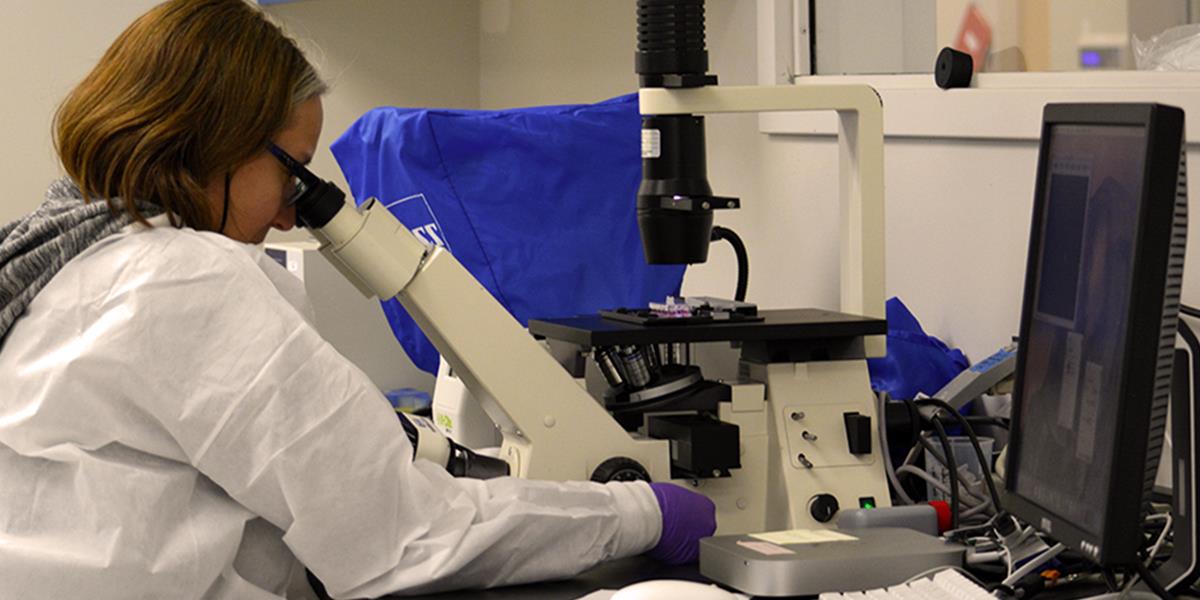
CAMBRIDGE, MA – Scientists from the ALS Therapy Development Institute announced today the publication of the paper, “Guanabenz treatment accelerates disease in a mutant SOD1 mouse model of ALS,” in the peer-reviewed journal PLOS ONE. The paper summarizes rigorous preclinical experiments conducted at the Institute using both cell-based and animal models of SOD1 mediated ALS.
In cell-based assays, chemically induced endoplasmic reticulum (ER) stress results in protein misfolding and cell death. Treatment with guanabenz in this assay has been shown by the ALS Therapy Development Institute and other research groups to be protective. Several published research reports have suggested a neuroprotective effect by guanabenz in SOD1 mice resulting in slower disease progression and an improvement in survival. In these studies from the Institute, treatment of SOD1 mice with guanabenz actually accelerated disease progression. These findings are important to ALS drug discovery and development researchers because they are in direct contrast to previous published results indicating that guanabenz is efficacious in SOD1 mice.
“The reality is that in a complex mammal, a drug can do many things, not just what you’re observing in the cell system. This paper highlights the importance of comprehensive preclinical testing, such as in animal models of the disease,” said Fernando G. Vieira, M.D., corresponding author of the paper and director of research operations and in vivo operations at the ALS Therapy Development Institute.
ALS is a progressive neurodegenerative disease characterized by the loss of motor neurons. Substantial evidence points to roles for endoplasmic reticulum (ER) stress and the unfolded protein response (UPR) in ALS disease progression.
While most ALS has not yet been linked to specific genetic mutations, at least 10% of cases have been linked to mutations in one or more genes. Mutations in the gene encoding superoxide dismutase (SOD1) were the first implicated as dominantly inherited causes of ALS. For this study, scientists at the Institute created a line of fibroblast cells to express this mutant gene and exposed them to a chemical (tunicamycin) which is well established to cause ER stress. Guanabenz treatment enhanced survival of those cells. Following those studies, scientists at the Institute conducted a series of animal experiments, including a pharmacokinetics experiment, pharmacodynamics experiments, and two separate efficacy experiments with two different guanabenz administration protocols. The Institute’s researchers observed a statistically significant acceleration of onset of paresis and shortened lifespan of mice treated with guanabenz in both efficacy experiments when compared to vehicle treated controls.
“The accumulation of misfolded proteins in motor neurons is a prominent component of familial and sporadic ALS. It is disappointing that we were unable to replicate previous findings suggesting a protective effect of guanabenz in SOD1 mice,” said Steve Perrin, Ph.D., CEO and CSO of the ALS Therapy Development Institute. “Many ALS patients only have one shot to enroll in a clinical trial. It is imperative that we attempt to replicate any potential treatment and publish the results, positive or negative. Quality preclinical studies are the foundation by which potential treatments enter clinical trials and provide hope to ALS patients everywhere.”
To access the paper online, please visit: http://dx.plos.org/10.1371/journal.pone.0135570